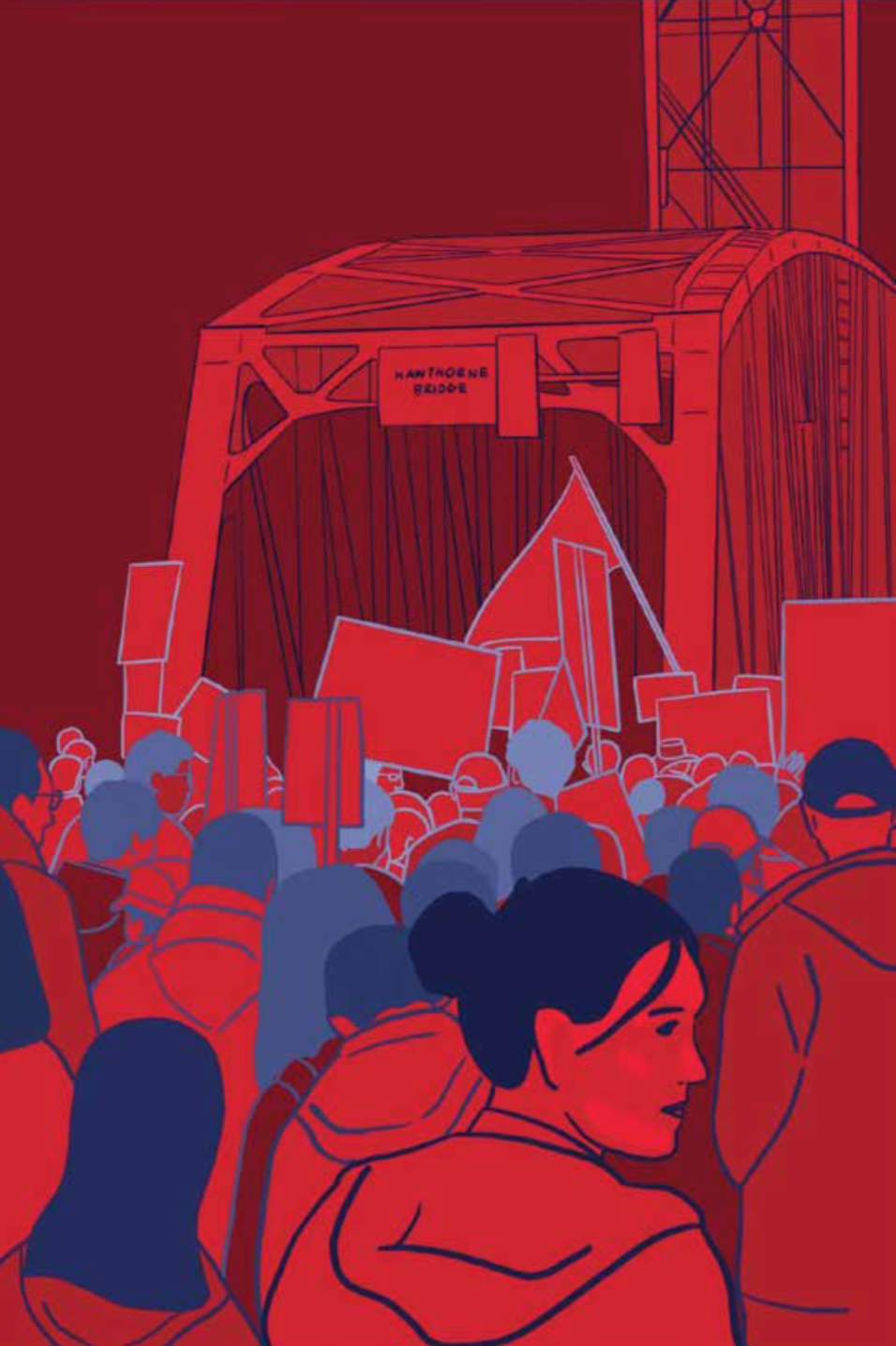
Hundreds of red-clad protesters flood into the University of Portland’s Buckley Center auditorium. Like me, most of them hope that they will have the opportunity to share their thoughts. They’ve arrived clutching sheets of paper, on which they have scrawled their worries, hopes and dreams for the future, their anger and frustration at the infamously slow action on the part of our city bureaucracy and visions of the world that they will leave for their grandchildren.
Some of them are youth. For the most part, that is a change.
The occasion was one that had been building momentum for months. Zenith Energy was (and currently is) planning to expand the oil train capacity of its Portland terminal. The expansion was met with outcry from Portland’s environmental community, and after months of pressure, the city finally agreed to host a forum on the issue this past July.
As people rapidly filled the seats, it became clear that not everyone would have an opportunity to testify. The words that I had rehearsed went unread, condemned to a dormant future in my computer files. This was a good thing—it meant that the Portland climate movement was strong—and thankfully, it was not unprecedented; legions of environmentally conscious people routinely force City Council meetings into overflow rooms, and occasionally garner so much attention that extra sessions are required.
While the youth may have stood alone when they spoke, they carried with them the force of a worldwide movement. These youth—a few veterans of the cause, some first-timers—were emblematic of an upheaval that has swept the globe.
On that day, July 15, 2019, the people who took the microphone spoke unanimously against the terminal. However, there was a new energy in the room, a feeling that the movement in Portland—a microcosm of the global movement—had gained momentum. The youth created that feeling.
When I first started participating in climate advocacy in eighth grade in 2015, youth in the climate movement were few and far between. While the science behind climate change was both known and frightening, the fever to take action had not yet caught on among younger demographics. I was first inspired to join climate activism when I watched a group of youth testify at a hearing about a proposed Pembina propane terminal. Those students would eventually win environmental awards for their testimonies–an action that now seems commonplace among youth. City officials were regularly taken aback when youth made a rare, unorthodox appearance in the room. When I entered eighth grade, with no environmental advocacy under my belt, Mayor Charlie Hales caught wind that a group of students from my school and I planned to testify at a city hearing on fossil fuels. I was invited to speak at his press conference beforehand, in part because there was such a significant absence of youth in climate politics, and yet such a great need for them.
Portland has a strong contingent of climate activists, largely made up of older generations. These groups work tirelessly to ensure that Portland remains a leader in the fight against climate change. For the most part, they reflect the worries that many have about the world that they will leave behind for their children and grandchildren. Lesser represented have been the worries possessed by many youth about the world that they will inherit.
When I began this work, it seemed that youth were having trouble finding their footing in the movement. Almost everyone knew that climate change existed, but for so many, it seemed to be an unwieldy, abstract phenomenon. The question of where to direct the energy that youth were bringing to the table was unanswered. For the youth who were involved, our presence often seemed tokenized. That isn’t to say that we didn’t have an impact, but we had to work harder for our voices to carry the same weight as adults in the room.
I struggled, and still feel torn with finding the intersection between sharing the perspective that only youth can bring, and being professional enough to be taken seriously. In 2017, a group of youth, including myself, worked with the City to create a youth climate advisory council, which City Council unanimously approved. However, integration into the City was not an easy task. After the council’s inception, it was a continual struggle to have our opinions taken seriously. Despite it being my generation’s future at risk, it always seemed like the applause for showing up outweighed the desire to take significant measures towards solutions.
That changed in 2018.
When Greta Thunberg first sat outside the Swedish Parliament holding her now-famous “Skolstrejk för
klimatet” sign, it was not a great deviance from what environmentally minded youth had been doing for years. However, Thunberg’s FridaysForFuture campaign of climate marches was the right movement for a time when frustrations were running high. Over one million people participated in strikes in March 2019. With the tension surrounding climate change reaching a boiling point, younger people coalesced to fight the crisis. The strikes were not the reason for the action; they instead exposed tensions that had been simmering for years without clear direction, and brought them to the forefront. Youth had, at last, found their voice in the climate change movement.
Since the climate strikes began, I’ve seen an influx of youth stepping up to take action for the planet. Youth who not only walk out of school to strike in solidarity with their four million other peers and adults, but who go further, joining youth groups or working independently. While people tend to focus on the global movement, from my vantage point, the activism occurring around the world has also catalyzed the activism of Portland youth. In the last few years, the number of environmentally focused youth groups in the state has grown by leaps and bounds; youth are lobbying, marching and coordinating. In turn, adults are finally realizing the power that the youth voice carries.
Currently, the City of Portland is drafting a Climate Emergency Resolution. After receiving backlash for their closed-door writing process, the city began reaching out to youth groups to create the best proposal possible. On a statewide level, youth have mobilized to fight for the Clean Energy Jobs Bill, making the trip to Salem from locations across the state. Youth have realized that we cannot afford to wait for adults to take action, that the onus to stop climate change now falls to us, whether we like it or not.
I cannot emphasize enough how motivating it has been to see youth rally around the climate cause. I now know that when I, or the other youth activists I work with, walk into a hearing or go to a rally, we will not be the only youth there. Having the force of a movement to back up our voices gives the youth that I fight with a more substantial impact. Recently, at a meeting for the Planning and Sustainability Commission that I testified at, two commissioners opened the meeting by talking about the Sept. 20 climate march. Both had attended, and one said that they had pulled their children out of school for it. Knowing that the people that help make the sustainability decisions for Portland children were marching in the streets just days before gave me hope that younger generations will finally put an end to the climate crisis. Youth have a unique ability to affect change, and it seems that at last, we are realizing our essential role as part of the climate solution.




